ST. LOUIS, MO., April 11, 2024 – In an exciting endorsement of the work being conducted at the Donald Danforth Plant Science Center, it was recently announced that technology developed by Keith Slotkin, PhD, member, and his laboratory, and funded in part by the National Science Foundation (NSF), was chosen as the very first project of the new NSF/NobleReach partnership.
Tag: National Science Foundation
Scientists CT scanned thousands of natural history specimens, which you can access for free
3D reconstructions of thousands specimens are now available online.
UC Irvine receives $15 million NSF grant for integrative movement research
The National Science Foundation has granted $15 million to the Integrative Movement Sciences Institute at the University of California, Irvine. This six-year funding, part of the NSF’s Biology Integration Institutes program, will support groundbreaking research led by Monica Daley, professor of ecology & evolutionary biology at the UCI School of Biological Sciences.
Dr. Gabe Xu wins $75K McMahon-Pleiad Prize from University of Alabama System in recognition of research contributions
Dr. Gabe Xu, an associate professor of mechanical and aerospace engineering in the College of Engineering at The University of Alabama in Huntsville (UAH), has been selected to receive the 2023 University of Alabama (UA) System McMahon-Pleiad Prize.
New ‘Long Range Plan for Nuclear Science’ recommends FRIB enhancements to forward the field
The Facility for Rare Isotope Beams, or FRIB, figures largely in the Nuclear Science Advisory Committee’s, or NSAC’s, newly released “A New Era of Discovery: The 2023 Long Range Plan for Nuclear Science.” The new plan, released on Oct. 4, provides a roadmap for advancing the nation’s nuclear science research programs over the next decade. It is the eighth long range plan published by NSAC since 1979.
UAH researcher wins NASA FINESST award to study solar weather to better protect against threats to humans, satellites and near-Earth technologies
A doctoral student at The University of Alabama in Huntsville has been awarded a NASA Future Investigators in NASA Earth and Space Science and Technology (FINESST) fellowship to study space weather to improve predictive methods for coronal mass ejections (CME) from the Sun.
FSU statistician to use NSF grant to improve computational efficiency of statistical analyses with environmental, health applications
A Florida State University researcher has been granted funding from the National Science Foundation to help reduce the amount of time it takes to conduct certain statistical analyses, slashing the interval from days to just minutes.
Professor receives grant to develop electronic devices made entirely of paper
A professor at Binghamton University, State University of New York has received a $400,000 grant from the National Science Foundation to develop electronic devices made entirely of paper.
UAH to feature AI, cybersecurity, directed energy, aerial systems and more at 2023 Space & Missile Defense Symposium
The University of Alabama in Huntsville (UAH), a part of the University of Alabama System, will highlight its extensive capabilities in artificial intelligence, cybersecurity, directed energy, information systems, rotorcraft systems, supply chain management and hypersonics during the Space & Missile Defense (SMD) Symposium at the Von Braun Center in Huntsville, Ala.
St. Croix: Radio Astronomy in the Caribbean
Although the location of St. Croix is perfect for a VLBA antenna, the island poses significant challenges for using and maintaining a radio antenna. The St. Croix dish is located on the eastern side of the island, almost at sea level. So it is constantly bombarded by salt air, ocean rains, and even the occasional tropical storm.

Una jarra cósmica desbordando material estelar
Una serie de nubes simétricas y ondulantes de polvo y gas marcan la agónica muerte de una antigua estrella gigante roja, tal como lo muestra esta imagen obtenida en Chile por el telescopio Gemini Sur, parte del Observatorio Internacional Gemini, operado por AURA y NOIRLab de NSF. La estructura resultante, que se dice se parece a una jarra inglesa de estilo antiguo, es una nebulosa de reflexión bipolar que rara vez es posible de apreciar. La evidencia sugiere que este objeto se formó por las interacciones entre la estrella gigante roja moribunda y una estrella compañera destrozada hace mucho.
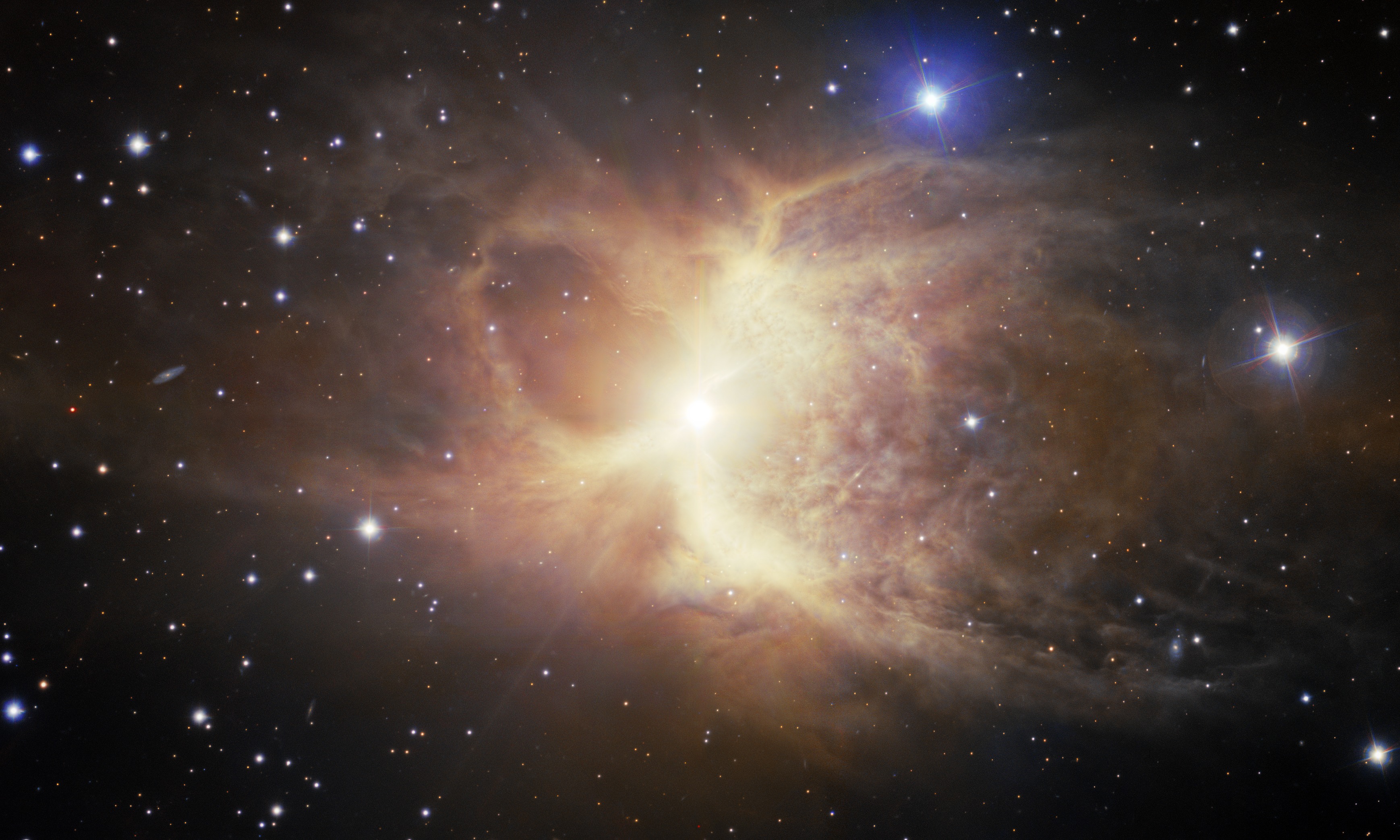
Rare, Double-Lobe Nebula Resembles Overflowing Cosmic ‘Jug’
A billowing pair of nearly symmetrical loops of dust and gas mark the death throes of an ancient red-giant star, as captured by Gemini South, one half of the International Gemini Observatory, operated by NSF’s NOIRLab. The resulting structure, said to resemble an old style of English jug, is a rarely seen bipolar reflection nebula. Evidence suggests that this object formed by the interactions between the dying red giant and a now-shredded companion star.
Baseline 16—Fast Radio Bursts: Bursting with Mysteries
Fast radio bursts are powerful flashes of light that shine for only milliseconds. Join our host Summer Ash of the National Radio Astronomy Observatory as she talks about how astronomers study these mysterious bursts, and what might be causing them.
A Surprise Chemical Find by ALMA May Help Detect and Confirm Protoplanets
Scientists using the Atacama Large Millimeter/submillimeter Array (ALMA) to study the protoplanetary disk around a young star have discovered the most compelling chemical evidence to date of the formation of protoplanets.
Nearly Two Million Galaxies, Quasars, and Stars Contained in DESI Early Data Release
Nearly two million objects, including distant galaxies, quasars, and stars, comprise the early data release from the Lawrence Berkeley National Laboratory Dark Energy Spectroscopic Instrument (DESI) at Kitt Peak National Observatory, a Program of NSF’s NOIRLab. These data will help researchers study the expansion history of the Universe in unprecedented detail and explore other frontier areas of astrophysical research. DESI is funded by the US Department of Energy and managed by Berkeley Lab.
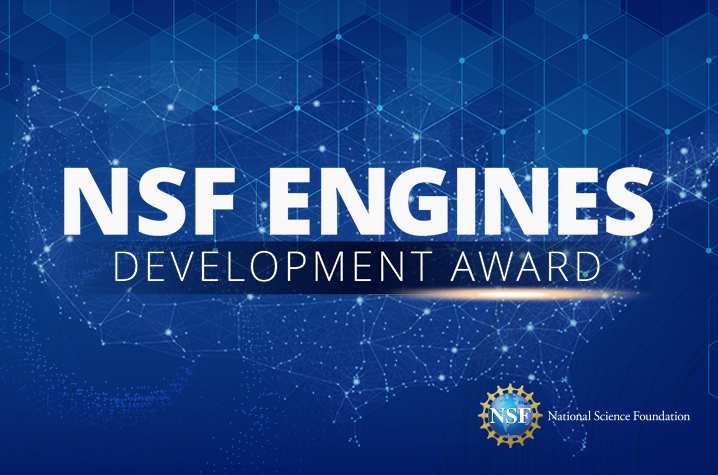
Kentucky, Tennessee GAME Change team wins NSF Engines Development Award
The University of Kentucky, as lead organization, together with partners across Kentucky and Tennessee, has been awarded $1 million from the U.S. National Science Foundation’s Regional Innovation Engines, or NSF Engines, program. This team’s proposal, “Advancing carbon centric circular economy technologies for advanced manufacturing solutions (KY, TN),” is led by a coalition named Generate Advanced Manufacturing Excellence for Change (GAME Change).
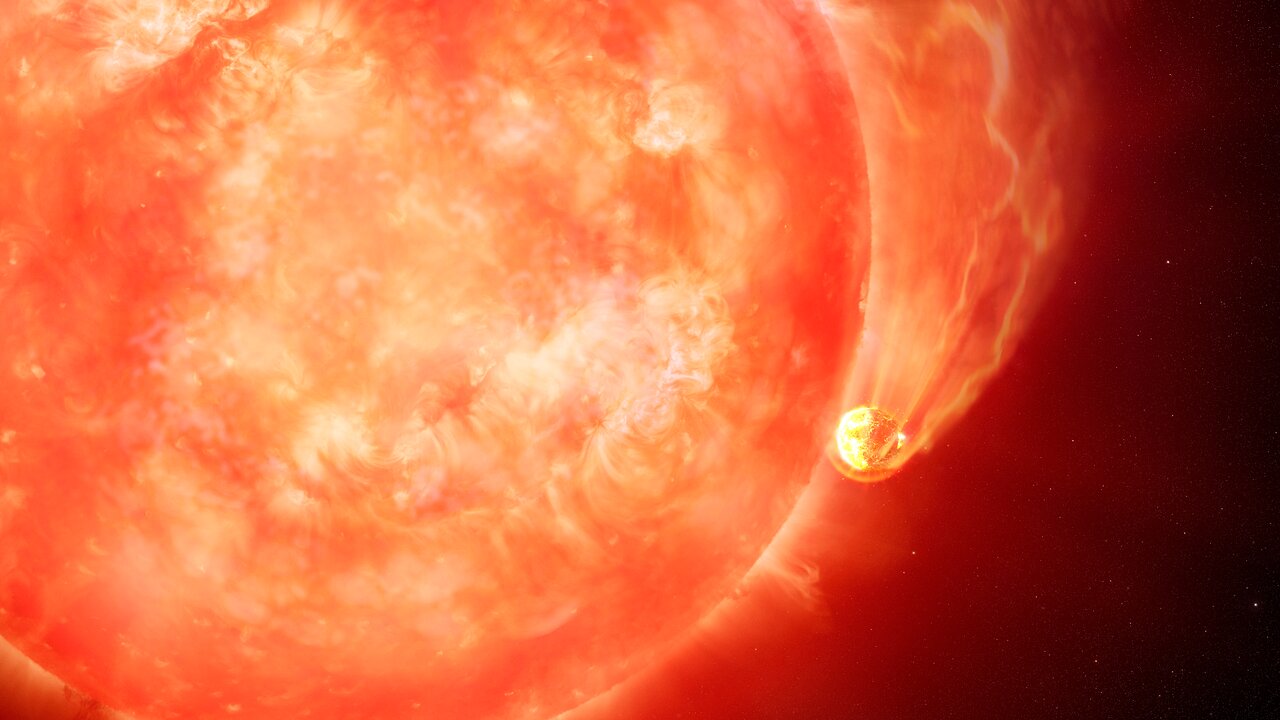
Astronomers Witness Star Devouring Planet: Possible Preview of the Ultimate Fate of Earth
Astronomers using the Gemini South telescope in Chile, operated by NSF’s NOIRLab, have observed the first evidence of a dying Sun-like star engulfing an exoplanet. The “smoking gun” of this event was seen in a long and low-energy outburst from the star — the telltale signature of a planet skimming along a star’s surface. This never-before-seen process may herald the ultimate fate of Earth when our own Sun nears the end of its life in about five billion years.
NSF Telescopes Image M87’s Supermassive Black Hole and Massive Jet Together for the First Time
Scientists studying the supermassive black hole at the heart of the M87 galaxy have revealed the origins of the monster’s powerful jet and imaged the jet and its source together for the first time. What’s more, the observations have revealed that the black hole’s ring is much larger than scientists previously believed.
Científicos logran mejorar la nitidez de la primera imagen de un agujero negro
Un equipo de científicos, que incluyó a un astrónomo de NOIRLab de NSF, desarrolló una nueva técnica de aprendizaje automático (machine-learning) para mejorar la definición y la nitidez de imágenes de interferometría de radio. Para demostrar el poder de su nueva técnica, a la que llamaron PRIMO, el equipo creó una nueva versión, en alta definición, de la icónica imagen captada por el Telescopio Event Horizon del agujero negro supermasivo ubicado al centro de Messier 87, una galaxia elíptica gigante localizada a unos 55 millones de años luz de la Tierra.
2023 Jansky Fellows Awarded
As a part of its central mission to nurture and inspire the next generation of radio astronomers, the National Science Foundation’s National Radio Astronomy Observatory (NRAO) has selected four outstanding early career professionals for its 2023 Jansky Fellowship.
Baseline 15: Space Lasers! How Astronomers Use Astrophysical Masers
Artificial lasers on Earth are used for everything from scanning grocery items to delicate surgery. But there are also naturally occurring lasers known as astrophysical masers. Join National Radio Astronomy Observatory as we explore what these “space lasers” tell astronomers about the Universe.
Dual Quasars Blaze Bright at the Center of Merging Galaxies
Astronomers using an array of ground- and space-based telescopes, including Gemini North on Hawai‘i, have uncovered a closely bound duo of energetic quasars — the hallmark of a pair of merging galaxies — seen when the Universe was only three billion years old. This discovery sheds light on the evolution of galaxies at “cosmic noon,” a period in the history of the Universe when galaxies underwent bursts of furious star formation. This merger also represents a system on the verge of becoming a giant elliptical galaxy.
Study finds how our brains turn into smarter disease fighters
Irvine, Calif., Jan. 30, 2023 — Combating Alzheimer’s and other neurodegenerative diseases by inserting healthy new immune cells into the brain has taken a leap toward reality. Neuroscientists at the University of California, Irvine and the University of Pennsylvania have found a way to safely thwart the brain’s resistance to them, vaulting a key hurdle in the quest.
Science Highlights 2022: Black Holes, Pulsars and Turbulence
The Universe is a dynamic and exciting place, with stars, planets, and galaxies being born, dying, and undergoing dramatic changes. In 2022, the telescopes of the National Science Foundation’s National Radio Astronomy Observatory (NRAO) revealed fascinating new details about several of these processes, and we’re giving you a taste of the greatest radio astronomy moments of the year.
Billions of Celestial Objects Revealed in Gargantuan Survey of the Milky Way
Astronomers have released a gargantuan survey of the galactic plane of the Milky Way. The new dataset contains a staggering 3.32 billion celestial objects — arguably the largest such catalog so far. The data for this unprecedented survey were taken with the Dark Energy Camera, built by the US Department of Energy, at the NSF’s Cerro Tololo Inter-American Observatory in Chile, a Program of NOIRLab.
NSF and SpaceX Finalize Radio Spectrum Coordination Agreement
The National Science Foundation (NSF) and SpaceX have finalized a radio spectrum coordination agreement to limit interference from the company’s Starlink satellites to radio astronomy assets operating between 10.6 and 10.7 GHz. The agreement, detailed in a statement released by NSF today, ensures that Starlink satellite network plans will meet international radio astronomy protection standards, and protect NSF-funded radio astronomy facilities, including the National Radio Astronomy Observatory (NRAO) and the Green Bank Observatory (GBO).
Protected: Science Results From NRAO Facilities to Be Presented at Multiple AAS 241 Press Conferences
Five new scientific results from the Atacama Large Millimeter/submillimeter Array (ALMA), the Very Large Array (VLA), and the Green Bank Observatory (GBO) will be revealed at multiple press conferences during the 241st meeting of the American Astronomical Society (AAS) from January 8 to 12, 2023, in Seattle, Wash.
FAU Receives $1 Million NSF Grant to Empower Women in STEM Faculty
The three-year NSF ADVANCE ADAPTATION grant will help transform faculty diversity and ensure appropriate representation of women in STEM. This grant continues the work of the late Emmanuelle Tognoli, Ph.D., who served as a research professor in FAU’s Center for Complex Systems and Brain Sciences within the Charles E. Schmidt College of Science and a member of the FAU Stiles-Nicholson Brain Institute.
FAU Receives NSF Grant for Secure Communications Over 5G Networks
Researchers have joined forces to create a universal radio adapter that will enable seamless and secure operations through non-cooperative indigenous 5G networks for U.S. military, government and critical infrastructure systems.
Together with Missouri S&T, Saint Louis University Researchers Use Artificial Intelligence to Improve Kidney Transplant Process
With a new grant that brings together engineering expertise from Missouri S&T and medical expertise from Saint Louis University’s School of Medicine, researchers are investigating how artificial intelligence can support matchmaking between donated kidneys and transplant centers to help more patients in need.
Scientists Land $3 Million NSF Grant to Empower Local Coral Reef Monitoring Efforts
Although communities care deeply about the fate of coral reefs, they often lack the scientific tools to document changes in the local reefs on which they rely. A new project will help to empower community members already interested in coral reef health with the tools needed to document changes in these systems. Importantly, findings from the research will inform management of ecosystems.
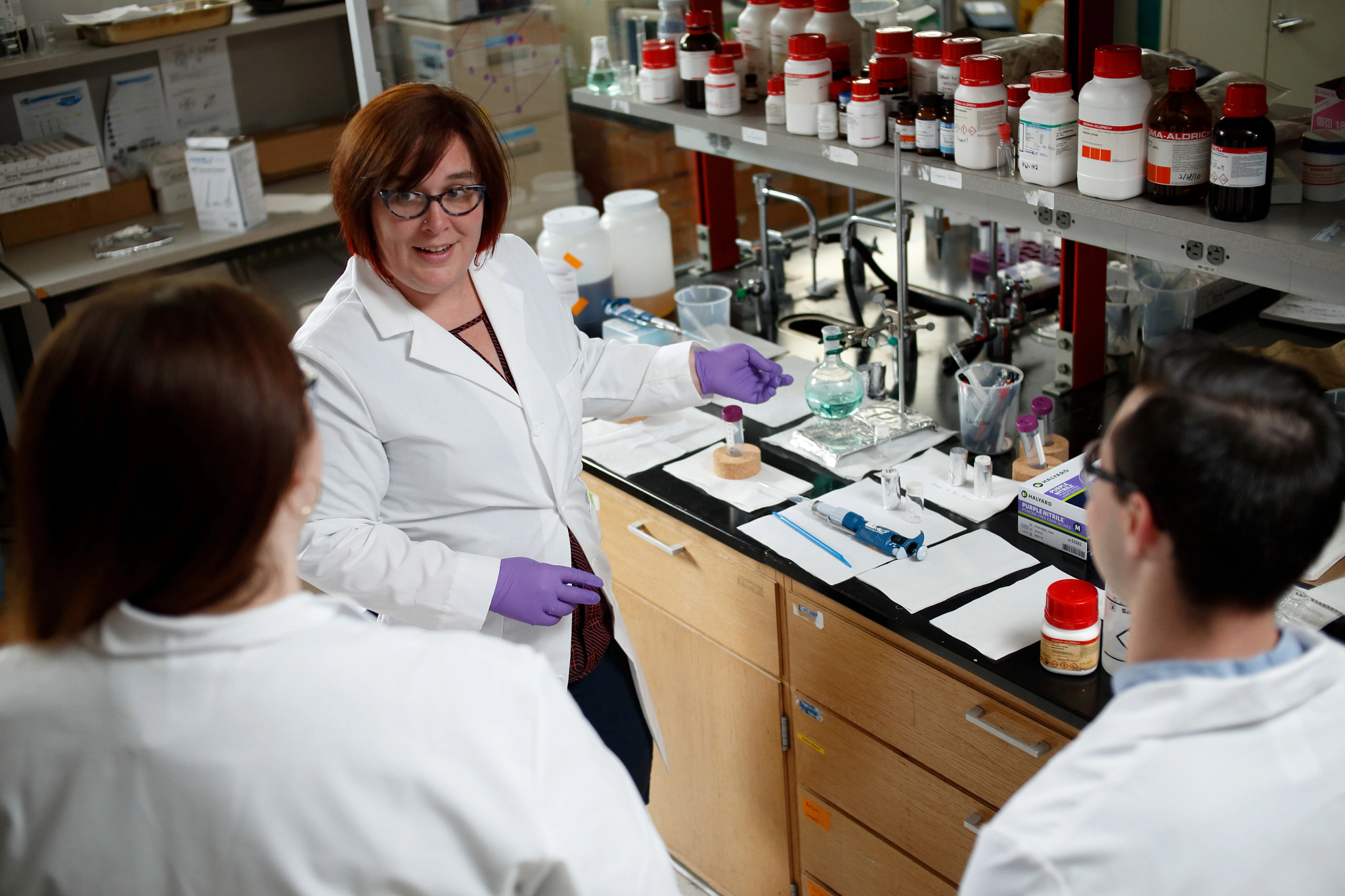
IU to lead NSF-funded center focused on transforming nanocrystal research
A multi-institution team of researchers led by Indiana University chemist Sara Skrabalak has been awarded $1.8 million from the NSF to establish a research center focused on transforming nanocrystal discovery and design.
NRAO Expands Radio Dynamic Zone Testing with Support from NSF
Following a generous grant from the National Science Foundation’s Spectrum Innovation Initiative (SII), NSF’s National Radio Astronomy Observatory (NRAO) will expand efforts to establish and support the co-existence of research and commercial entities across the radio spectrum.
ALMA Witnesses Deadly Star-Slinging Tug-of-War Between Merging Galaxies
While observing a newly-dormant galaxy using the Atacama Large Millimeter/submillimeter Array (ALMA) and the Hubble Space Telescope (HST), scientists discovered that it had stopped forming stars not because it had used up all of its gas but because most of its star-forming fuel had been thrown out of the system as it merged with another galaxy. The result is a first for ALMA scientists. What’s more, if proven common, the results could change the way scientists think about galaxy mergers and deaths.
ALMA’s 2014 Ground-Breaking HL Tau Results Have Appeared in Over 1,000 Scientific Papers in Less Than a Decade
Ground-breaking 2014 HL Tau observational data from the Atacama Large Millimeter/submillimeter Array (ALMA) has been cited in more than 1,000 scientific studies in the past 7.5 years, aiding in major breakthroughs in scientists’ understanding of planet formation. The milestone comes as engineers at the U.S. National Science Foundation’s National Radio Astronomy Observatory (NRAO) embark on ambitious upgrades to the receivers responsible for the clarity of initial observations.

New $26 Million NSF Engineering Research Center to Advance Future of Smart Streetscapes
FAU has landed a major NSF Engineering Research Center with Columbia University, Rutgers University, the University of Central Florida, and Lehman College.
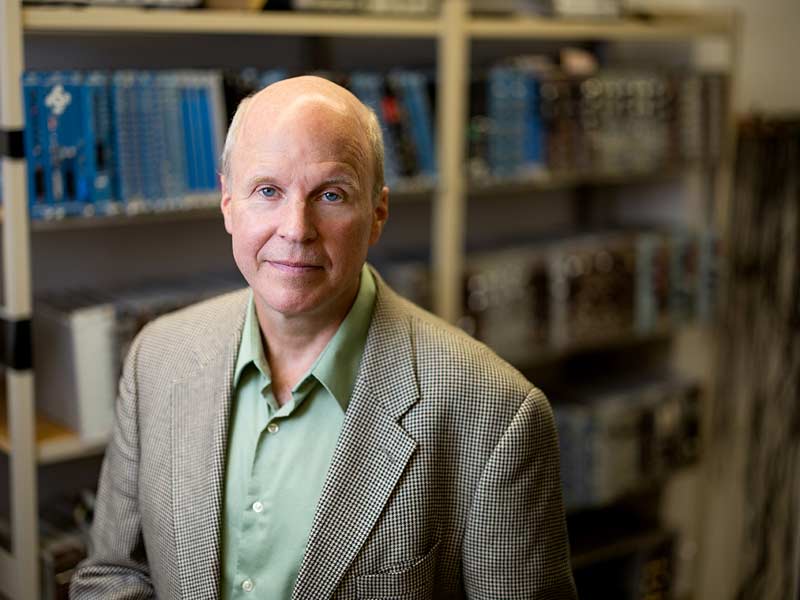
Tulane physicist awarded $8.2 million to precisely measure lifetime of the free neutron
The $8.2 million grant is the largest is the largest ever direct NSF award to Tulane.
How long does a tree or ecosystem remember a drought?
A team of NAU scientists, led by SICCS professor Kiona Ogle, won a $3.6 million grant from the NSF to study the legacy of extreme climate events on ecosystems in the American West; they hope to not only know how long an extreme event influences ecosystems but also figure out how to better forecast such effects.
Engineers explore innovative ways to improve resilience of coastal structures
University of Miami engineering and ocean sciences faculty members received federal research funding recently to delve into how they can strengthen coastal buildings and seawalls in the face of climate change.
Science Results From NRAO Facilities to Be Presented at Multiple AAS 240 Press Conferences
Seven new scientific results from the Atacama Large Millimeter/submillimeter Array (ALMA), the Very Large Array (VLA), and the Very Large Array Sky Survey (VLASS) will be revealed at multiple press conferences during the 240th meeting of the American Astronomical Society (AAS) between June 13-15, 2022 in Pasadena, California.

NSF Tags FAU Researcher for Post-quantum Cryptography in NextG Networks
FAU’s Reza Azarderakhsh, Ph.D., was among 34 investigators nationwide selected by the NSF for RINGS, which is short for Resilient and Intelligent Next-Generation Systems. His project is the only one working on taking post-quantum cryptography to next generation systems.
Astronomers Reveal First Image of the Black Hole at the Heart of Our Galaxy
At simultaneous press conferences around the world, including at a National Science Foundation-sponsored press conference at the US National Press Club in Washington, D.C., astronomers have unveiled the first image of the supermassive black hole at the center of our own Milky Way galaxy. This result provides overwhelming evidence that the object is indeed a black hole and yields valuable clues about the workings of such giants, which are thought to reside at the center of most galaxies. The image was produced by a global research team called the Event Horizon Telescope (EHT) Collaboration, using observations from a worldwide network of radio telescopes.
Scientists Find Elusive Gas From Post-starburst Galaxies Hiding in Plain Sight
Post-starburst galaxies were previously thought to scatter all of their gas and dust—the fuel required for creating new stars—in violent bursts of energy, and with extraordinary speed. Now, new data from the Atacama Large Millimeter/submillimeter Array (ALMA) reveals that these galaxies don’t scatter all of their star-forming fuel after all. Instead, after their supposed end, these dormant galaxies hold onto and compress large amounts of highly-concentrated, turbulent gas. But contrary to expectation, they’re not using it to form stars.
Matt Ajemian, Ph.D., Receives Prestigious NSF CAREER Award
Matt Ajemian, Ph.D., has received a $1,103,081 NSF CAREER grant for a project that will build fundamental knowledge on where and when large shell-crushing predators feed in order to ensure a sustainable future for shellfish species. Further, the work can provide guidance to shellfish restoration programs that are currently “flying blind” with respect to predation risk.
Marek Urban develops hose that can repair its own cracks
Dr. Marek Urban and his research group at Clemson University have developed a self-repairing hose to dispense hydrogen as part of the nation’s effort to diversify its fuel supply in the face of increasingly dire warnings about climate change.
UA Little Rock Postdoctoral Researcher Receives $40K Grant to Create Predictive Modeling of Refugee Numbers
The Arkansas Economic Development Commission, using flow-through funding from the National Science Foundation, has awarded a postdoctoral research fellow at UA Little Rock a grant worth more than $40,000 to create a machine learning model to predict refugee counts in the United States.
FAU Receives NSF Grant to Explore Trait Evolution Across Species
The NSF grant will enable scientists to elucidate trait evolution across species using statistical and supervised machine learning approaches to vigorously and accurately predict general and specific evolutionary mechanisms that also will be applicable to various genomic and transcriptomic data for evolutionary discovery.
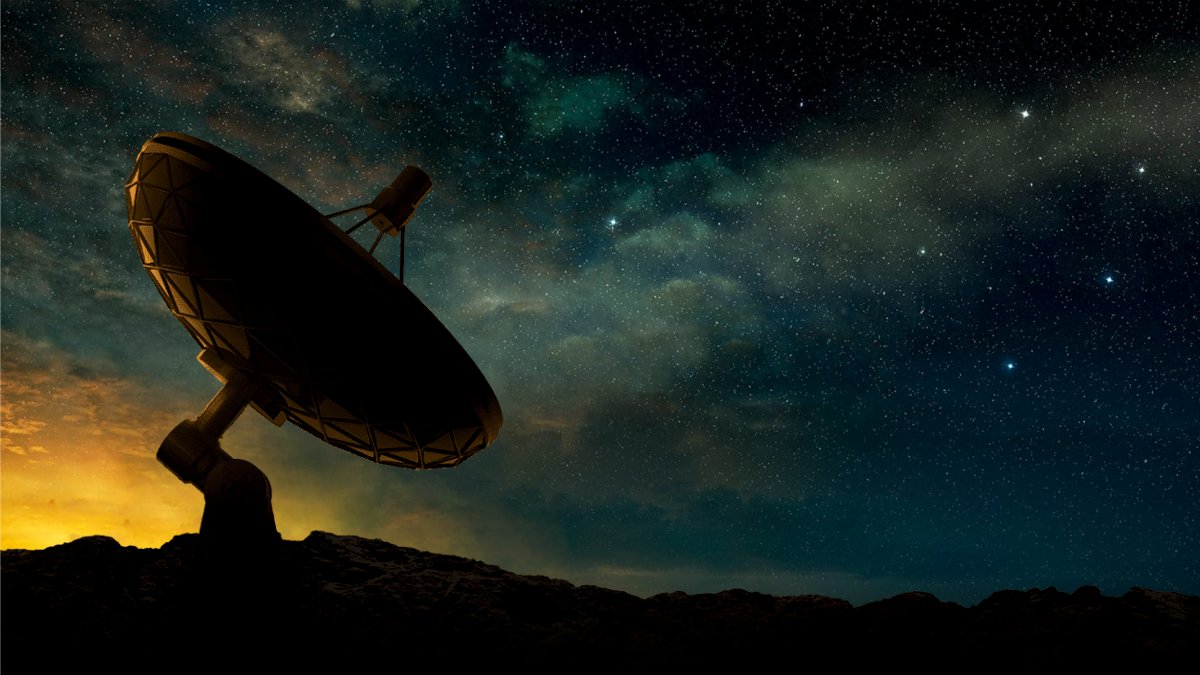
Notre Dame to lead $25 million SpectrumX project; first NSF Spectrum Innovation Initiative Center
The University of Notre Dame-led SpectrumX project is bringing together experts from 29 organizations to transform the landscape of spectrum research, education, collaboration and management.
Engineers develop prototype of electronic nose
Notre Dame researchers have developed a prototype of an electronic nose, using nanoengineered materials to tune the sensitivity and selectivity to mimic the performance and capabilities of a human nose.
How do brains form? New research studies folding, growth in fetuses
Binghamton University faculty will lead a $587,853 National Science Foundation project examining how brain folds form.